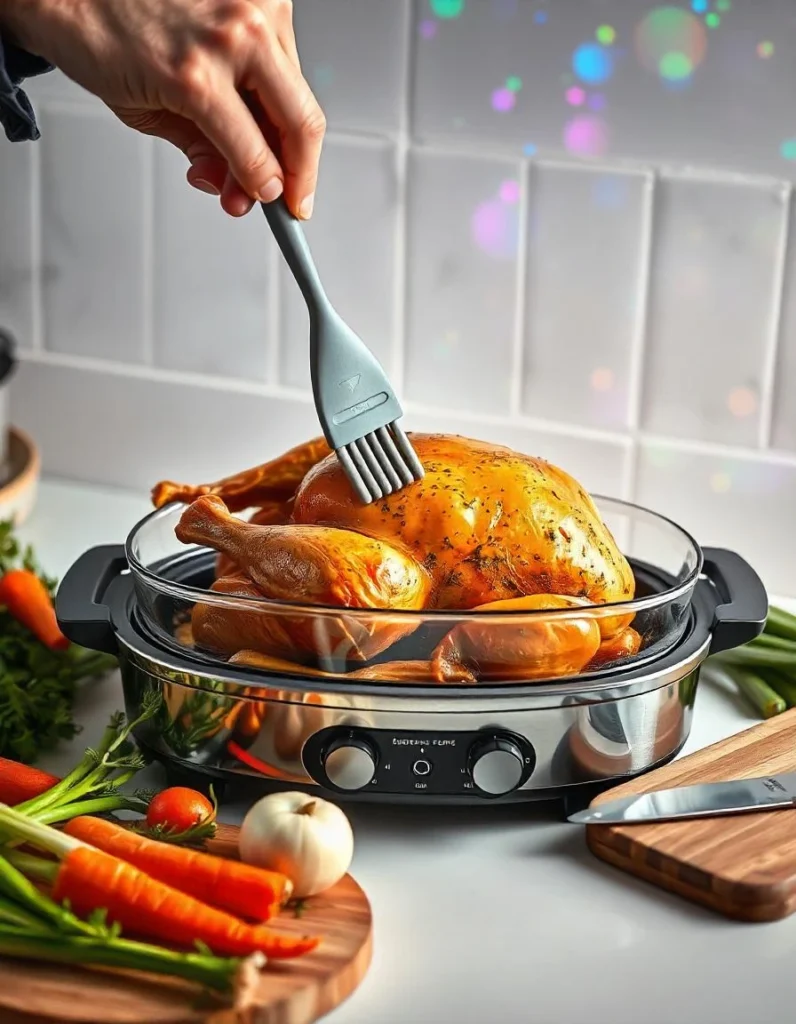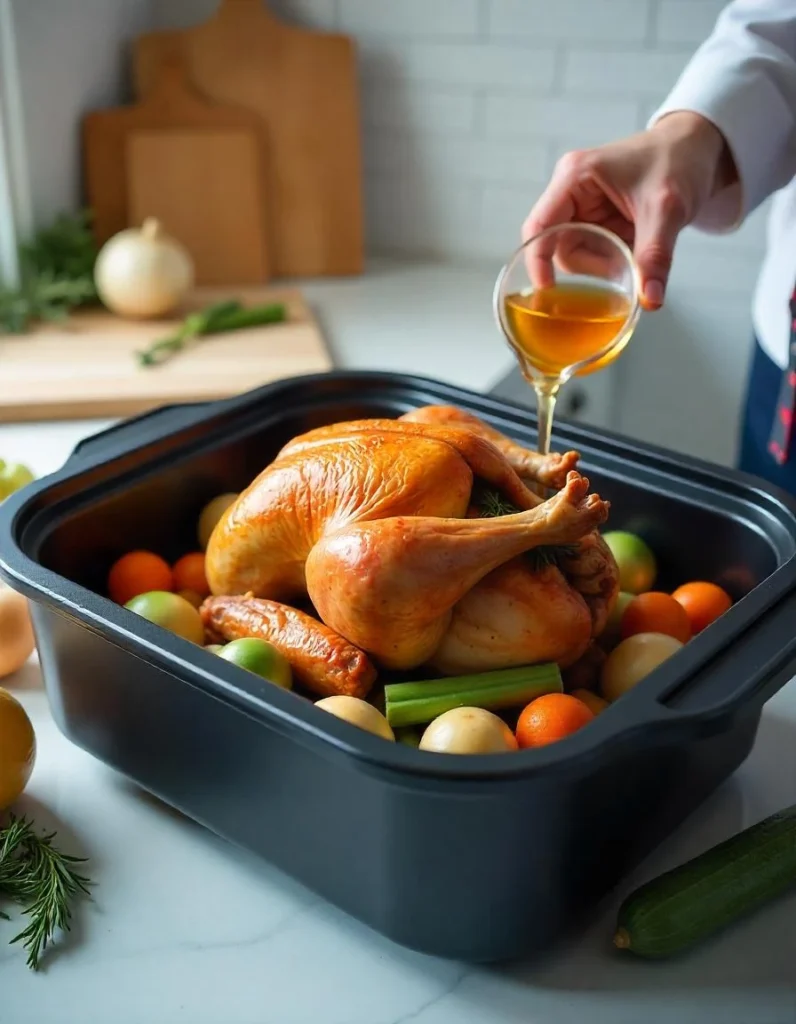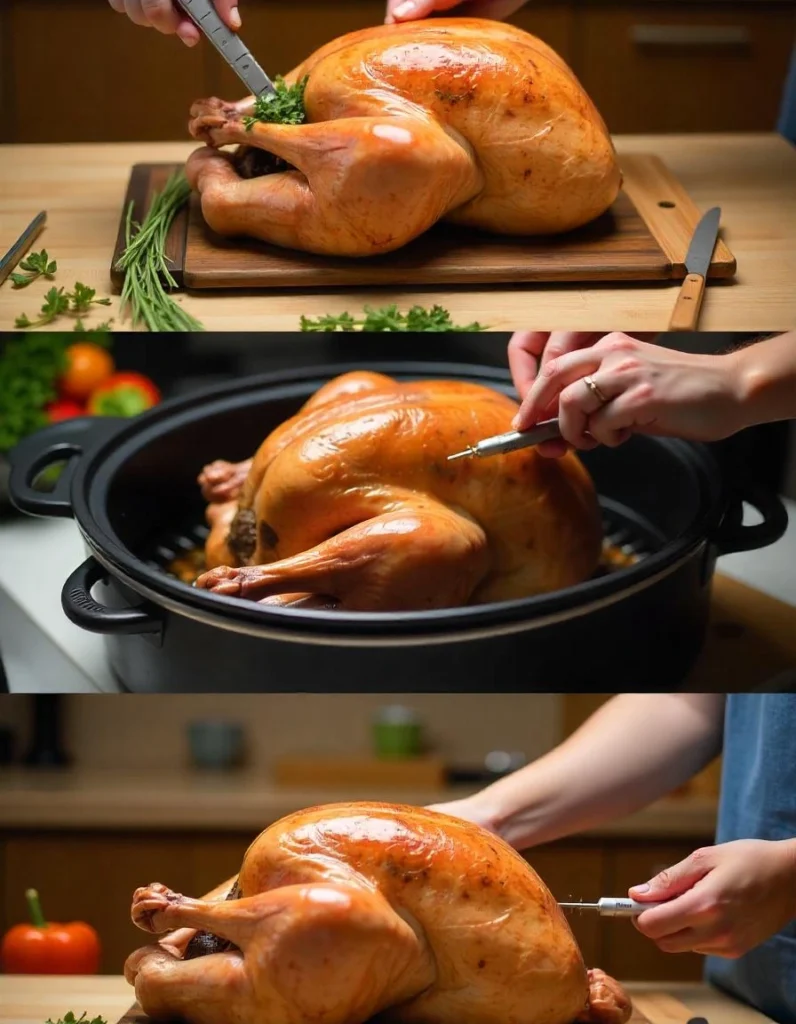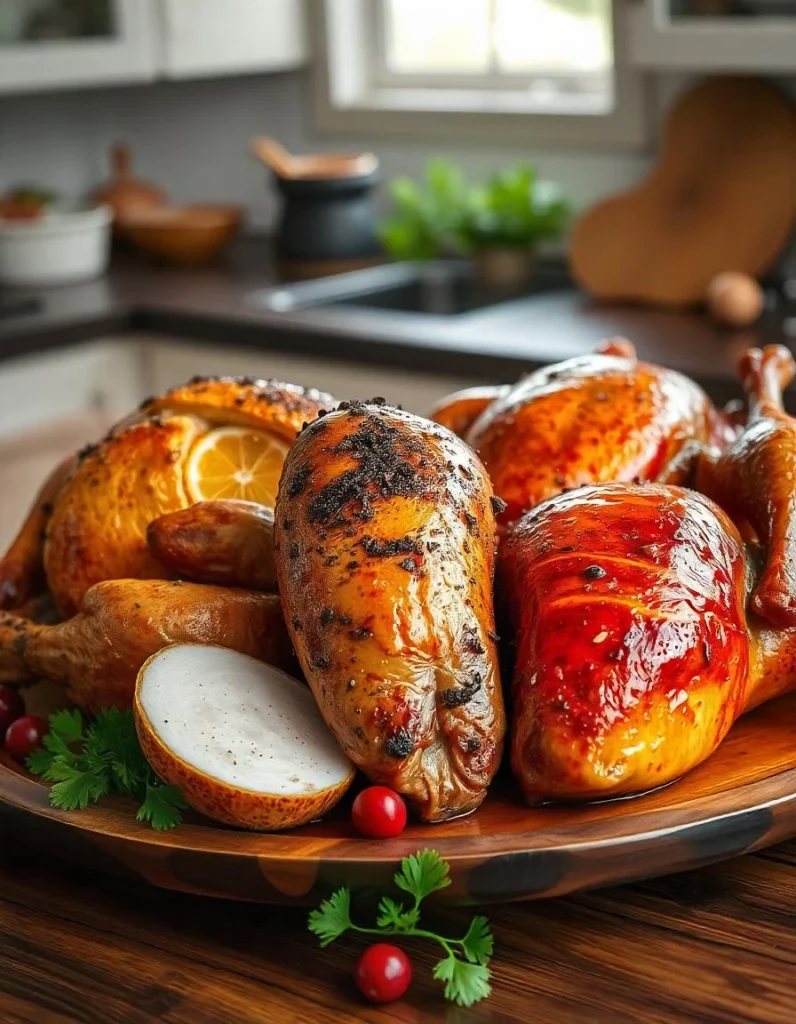Introduction

Cooking a turkey can feel overwhelming, especially during the holidays when expectations are high. However, mastering the use of an electric turkey roaster makes the process significantly easier and ensures a juicy, golden-brown turkey every time. In addition, this handy appliance frees up your oven for side dishes, saving both time and effort. As a result, an electric roaster is a valuable tool for any home cook. Whether you’re preparing a holiday feast or a casual dinner, this guide will help you achieve success and explore creative options to elevate your turkey.
For instance, you can pair your turkey with delightful sides like 5 Side Dishes to Pair with Roasted Turkey, ensuring a memorable meal for your guests.
Why Use an Electric Roaster for Turkey?

An electric turkey roaster is an indispensable tool for cooking turkey, offering a variety of benefits that make it a popular choice among home cooks. For example, it provides the precision and convenience needed to consistently deliver a perfectly cooked turkey. Unlike traditional ovens, electric roasters are specifically designed to simplify the cooking process while maximizing flavor and texture.
Even Heat Distribution
One of the most notable advantages of an electric roaster is its ability to distribute heat evenly. In fact, the consistent temperature control ensures that the turkey cooks uniformly without any dry spots or unevenly cooked areas. As a result, the meat remains tender and moist throughout, eliminating the guesswork often associated with traditional oven roasting.
Energy Efficiency
Electric roasters consume significantly less energy compared to a full-sized oven. Moreover, their compact design and efficient heating mechanisms make them an eco-friendly option, especially during the holidays when energy consumption tends to spike. Because of this, you can save on electricity costs while still achieving a beautifully roasted turkey.
Space-Saving
Hosting a holiday feast often requires juggling multiple dishes, which can put a strain on oven space. However, an electric roaster frees up your primary oven for preparing side dishes, appetizers, or desserts. For instance, you can use the oven for baking Easy Churro Cheesecake or roasting vegetables, ensuring a seamless cooking experience.
Moisture Retention
The sealed environment of an electric roaster helps lock in moisture, resulting in an exceptionally juicy turkey. Similarly, the controlled cooking conditions prevent the meat from drying out, making it easier to achieve consistently delicious results. In short, the roaster takes the effort out of keeping the turkey tender and flavorful.
In addition, using a roaster streamlines the cooking process, providing a stress-free way to prepare your holiday centerpiece. Not only that, but it also ensures reliable and professional-quality results, even for novice cooks. For added inspiration, consider exploring versatile recipes like Ditalini Pasta or Birria Ramen to complement your turkey and round out your meal.
By choosing an electric turkey roaster, you’re not just simplifying your cooking routine—you’re also elevating the overall quality of your dishes. Above all, it’s a tool that ensures you can enjoy the holidays as much as your guests.
Step-by-Step: How to Cook a Turkey in an Electric Roaster

Cooking a turkey in an electric roaster is a straightforward process. For instance, follow these steps for consistent results:
1. Thaw the Turkey Properly
- Thaw the turkey in the refrigerator for 24 hours per 5 pounds. On the other hand, if you’re short on time, use the cold water method by changing the water every 30 minutes.
2. Prepare the Turkey
- Remove the giblets and neck from the cavity.
- Rinse and pat the turkey dry with paper towels.
- Season with salt, pepper, and a mix of your favorite herbs and spices. In fact, rubbing butter under the skin adds extra flavor.
3. Preheat the Roaster
- Set the electric roaster to 325°F. Consequently, this ensures even cooking.
4. Position the Turkey on a Rack
- Place the turkey breast-side up on the roasting rack. Similarly, this prevents the bottom from becoming soggy and allows heat to circulate evenly.
5. Add Aromatics and Liquid
- Surround the turkey with onions, garlic, celery, and carrots. Add 1-2 cups of chicken broth or water for moisture. In short, this step enhances flavor and keeps the turkey juicy.
6. Cover and Roast
- Cover the roaster with its lid and cook according to the turkey’s weight:
- 10–14 lbs: 2.5–3 hours
- 15–18 lbs: 3–3.5 hours
- 19–22 lbs: 3.5–4 hours
7. Check for Doneness
- Insert a meat thermometer into the thickest part of the breast and thighs. As a result, the turkey is fully cooked when it reaches an internal temperature of 165°F.
8. Rest Before Carving
- Let the turkey rest for 20-30 minutes before carving. Because of this, the juices will redistribute, ensuring tender and moist slices.
Creative Variations for Roasting Turkey

Elevate your turkey by trying one of these flavorful options:
- Herb Butter Infusion
- Spread herb-infused butter under the skin for rich flavor and crispy skin. For example, fresh rosemary, thyme, and garlic work beautifully together.
- Citrus-Stuffed Turkey
- Fill the cavity with oranges, lemons, and limes. As a result, the steam infuses the meat with a tangy, fresh aroma.
- Smoky Paprika Rub
- Combine smoked paprika, cayenne, garlic powder, and olive oil for a bold, smoky crust.
- Sweet and Savory Glaze
- Brush a mixture of maple syrup, Dijon mustard, and soy sauce during the last 30 minutes of roasting. In addition, this adds a glossy finish and layers of flavor.
Moreover, these variations guarantee your turkey will stand out as the centerpiece of the meal. Pair it with dishes like Passover Potato Pie or Crinkle-Cut French Fries for a complete feast.
Tips for Perfect Results
- Don’t Lift the Lid Too Often
- Avoid lifting the lid, as this releases heat. Instead, rely on a thermometer to monitor the temperature.
- Use a Meat Thermometer
- Ensure the turkey reaches an internal temperature of 165°F in the breast and thighs. For instance, a digital thermometer provides quick and accurate readings.
- Baste Sparingly
- The sealed environment of an electric roaster retains moisture, reducing the need for frequent basting.
- Tent with Foil if Needed
- Cover the turkey with foil if the skin browns too quickly. In contrast, leaving it uncovered helps achieve a crispier finish.
FAQs: Common Questions About Cooking Turkey in an Electric Roaster
When it comes to cooking a turkey in an electric roaster, there are often questions about the process, safety, and best practices. Here are some frequently asked questions to help you achieve perfect results.
Can You Cook Stuffing Inside the Turkey in an Electric Roaster?
While it’s possible to cook stuffing inside the turkey, it is generally not recommended. In fact, stuffing the bird can increase the cooking time and make it harder to ensure the stuffing and turkey both reach safe internal temperatures. Instead, prepare the stuffing separately in a baking dish to ensure even cooking and food safety.
Do You Need to Baste the Turkey in an Electric Roaster?
Basting is not typically necessary when using an electric roaster. This is because the sealed environment of the roaster traps moisture, keeping the turkey juicy throughout the cooking process. However, if you prefer extra crispiness on the skin, you can baste occasionally during the last hour of cooking.
How Do You Clean an Electric Roaster?
Cleaning an electric roaster is simple. First, allow the roaster to cool completely before disassembling it. Remove the pan and rack, and wash them with warm, soapy water. In addition, avoid submerging the electric components in water. Wipe down the heating element with a damp cloth if needed.
Is an Electric Roaster Better Than an Oven?
Electric roasters offer several advantages over traditional ovens. For example, they are energy-efficient, save oven space, and provide consistent heat distribution. However, ovens are better for tasks requiring high-temperature browning, such as broiling or baking.
Can You Cook Other Dishes in an Electric Roaster?
Yes! Electric roasters are incredibly versatile. For instance, you can use them to make casseroles, slow-cooked stews, baked goods, and even desserts. In short, they are a multi-functional appliance that extends beyond roasting turkey.
In addition, these FAQs cover the most common concerns about using an electric roaster, ensuring you have all the knowledge needed for success. Whether you’re new to using a roaster or looking to refine your technique, these answers provide clarity and confidence for your cooking journey. Let me know if you’d like additional sections or tips!
Conclusion
In conclusion, cooking a turkey in an electric roaster takes the stress out of what is often seen as one of the most challenging parts of holiday meal preparation. Because of this, you can approach your cooking with confidence, knowing that the roaster simplifies the process while delivering consistent, delicious results. Moreover, it frees up your time and energy, allowing you to focus on preparing complementary dishes, perfecting your table setting, or simply enjoying quality moments with loved ones.
Whether you stick to traditional flavors or experiment with creative variations like herb butter infusions or smoky paprika rubs, your turkey will undoubtedly be the highlight of the meal. In addition, the juiciness and golden-brown perfection achieved with an electric roaster are sure to impress every guest, turning your holiday gathering into a memorable occasion.
Finally, for more inspiration and ideas to elevate your feast, visit trusted sources like Tasty, AllRecipes, and Delish. Moreover, explore complementary dishes from Recipes Rania to round out your menu. For example, pair your turkey with side dishes, unique pasta recipes, or indulgent desserts to create a feast that everyone will cherish and remember long after the holiday season. Above all, an electric turkey roaster ensures that the art of cooking a turkey is both effortless and enjoyable, leaving you with more time to savor the moments that truly matter.

